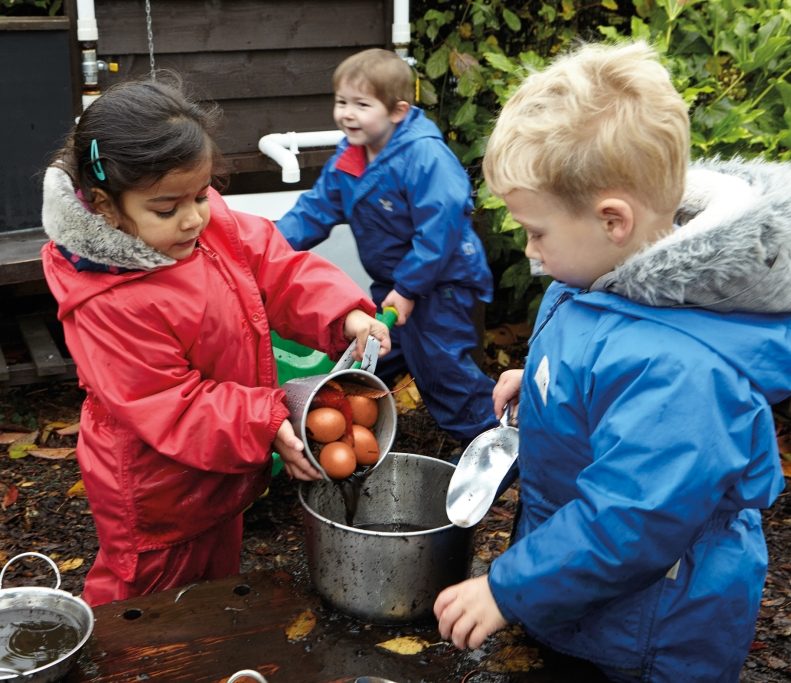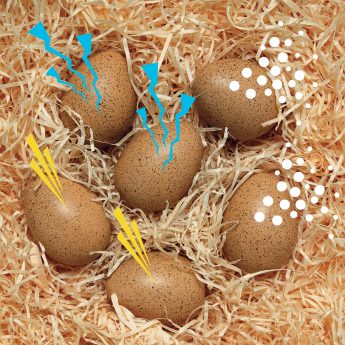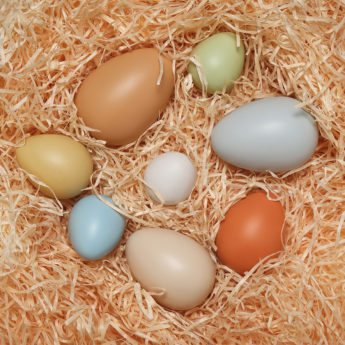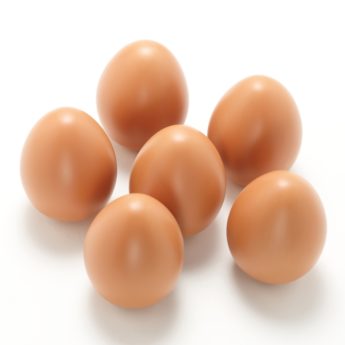Eggcellent Easter Activities
We’ve complied six fun learning actives for you to eggsperiment with!
1. Egg rolling
What you need
- Plastic eggs that come in two parts
- A wooden slope
- Selection of small items: pebbles, construction bricks, pieces of modelling clay, marbles
- A digital timer
- Pens and paper
- A digital recorder if available.
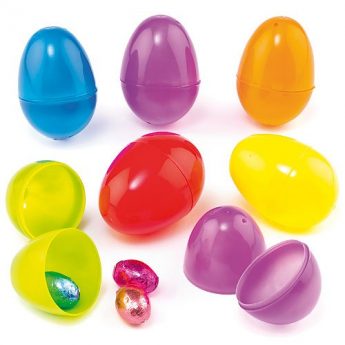
Image from Baker Ross
Activities
- Invite the children to roll plastic eggs down a slope and discuss what happens.
- Ask them to choose something to put inside an egg before rolling it down the slope.
- Will it go faster or slower? Why do you think that might be?
- How did it roll?
- What might happen if you change what is inside the egg?
- Use a digital timer to record how long the different eggs take to roll down the slope.
- Explore ways to record the results pictorially, in writing or using a digital recording device to share with others.
Eggtension
- Use construction materials to make vehicles that will carry an egg safely down the slope.
- Build a vehicle that will carry multiple eggs safely over rough terrain.
2. What was in the egg?
What you need
- Crumpled pieces of paper to represent large shards of egg shell
- A soft toy not known to the children – a Yellow Door Beat Baby would work wonderfully well
- Clues as to what the creature is:
- series of footprints
- written message or picture
- a nest (leaves, straw, cushions).
Activities
- Draw the children’s attention to the pieces of paper egg shell.
- Foster curiosity with questions:
- What could have hatched from this egg?
- What might it look like?
- How might we learn more?
- Leave a series of clues over the next couple of days to build momentum and enthusiasm.
- Draw pictures together of what this secretive creature might look like.
- Discuss what the children would like to tell the creature about their setting, and what they might like to ask it.
- After a couple of days, hide the toy so that the children can find it during a search of the setting.
- Over the next few days, the children can help the creature to feel at home by answering its questions, which could be written by it overnight or whispered in your ear, and showing it around.
Eggtension
- Allow the children to take the soft toy home, sharing what they did on their return.
- These and other exciting ideas, including a CD of rhymes, raps and songs, can be found in Yellow Door’s The Beat Baby Handbook .
3. How do you like your eggs?
What you need
- A mud kitchen or suitable outdoor space
- Mud
- Supply of water
- Soil
- One or two old pots and pans
- Simple kitchen utensils: wooden spoons, fish slices, spatulas
- Collections of natural items: pebbles, common flowerheads, bark, sticks, and so on
- Simple invitations sent to parents/carers before the activities begin
- Yellow Door’s Play Eggs
Activities
- Create an egg emporium outside, explaining that it is open for baking and creating.
- Tell the children there will be some special visitors later who will want to see what they have made during the day.
- Give the children free rein to experiment.
- They could use the Play Eggs with mud and other found ingredients to bake something special for the visitors.
- Making and decorating some flat egg shapes made from mud will create a lovely display.
- Invite parents, carers and other staff members to visit the emporium to see what has been going on.
Eggtension
- Add coloured sand to the activity. The children can mix their chosen sand with mud to create multi-coloured eggs.
- Use natural or manufactured materials to create eggcups for the Play Eggs.
4. Size-sorting Eggs
What you need
- Art materials: paper, paints, felt-tip pens
- Plastic picnic forks
- Materials to make nests: straw, sticks, leaves, torn paper
- Non-fiction books on birds
- Yellow Door’s Size-Sorting Eggs (YD1088).
Activities
An appreciation of comparative shapes and sizes is an important building block of sound mathematical understanding, which the following activities will help to develop.
- Introduce the Size-Sorting Eggs, allowing the children to handle them, pick a favourite and explain why. This will enable you to explore the language of comparison naturally.
- Discuss the differences between the eggs.
- Research birds and assign a different bird to each egg. Choices could be based on relative size, colour or similar.
- Use materials to build nests for the eggs that correlate with their size within the set.
Eggtension
Create chicks of different sizes that have hatched from the Size-Sorting Eggs.
- Pour some paint into a tray and run the prongs of a plastic fork through it.
- Place the fork paint-side-down on a piece of paper.
- The paint from the prongs of the fork will leave a lined impression on the paper.
- Repeat in this manner until the fluffy feathery body of a chick has been created.
- Once dry, add features and decorate using felt-tip pens.
5. Ice eggs
What you need
- Party balloons
- Small-world figures – fantasy figures work well
- Jug of water
- Food colouring
- Plastic pipettes.
Some preparation is needed for this set of activities as you need to make some frozen eggs.
- Partially inflate a balloon to allow it to stretch.
- Let the air out and squeeze a small-world figure into the balloon.
- Fill the balloon with enough water to immerse the figure.
- Knot the balloon and place it in the freezer.
- Repeat several times.
- Adding food colouring to the water used for the eggs will create some nice effects.
- Once frozen, remove the eggs from the balloons.
Activities
- Discuss the frozen eggs with the children.
- Tell stories about what the eggs hold and what laid them.
- Ask for suggestions as to how the figures can be released from their icy homes.
- Try as many suggestions as are viable, with warm water from a pipette being an option to try.
- Once the figures have been freed, support the children as they create stories using their finds.
Eggtension
- Support the children as they make frozen eggs for others to melt to discover their hidden secrets.
- Use a digital recording device to film a figure being hatched from an ice egg.
- Explore how a chick breaks out of the shell of its egg, finding a suitable film clip online.
6. Musical eggtravaganza
What you need
- Plastic eggs that come in two parts
- Collection of small items to go in the eggs: sand, pasta, shells, buttons, marbles
- Yellow Door’s Sensory Sound Eggs (YD1087)
- Percussion instruments: wood blocks, maracas, drums, shakers
- Musical excerpts of percussion music. Traditional rather than contemporary drumming works best.
Activities
- Listen to the Sensory Sound Eggs as they are shaken by the children one at a time.
- Discuss what they heard.
- Sort them based on the sounds produced.
- Invite the children to make their own egg shakers using the gathered items, along with others they suggest.
- Once they have filled an egg and sealed it shut, ask the children to compare their shakers and discuss what they discovered.
Eggtension
- Listen to some excerpts of traditional drumming.
- Discuss how the children feel about the music.
- Leave a selection of percussion instruments available in a suitable area of the setting for the children to use.
- Encourage them to explore the instruments on their own and with others, sharing what they have learned and/or created.
- You could invite others to listen to the children’s compositions.

 Register/Log in
Register/Log in
 Basket
Basket


